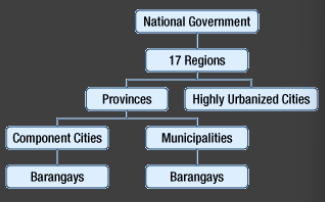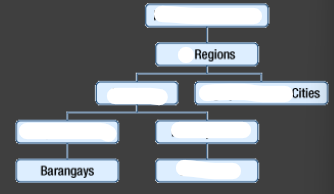Physical Configuration as Outcomes of Socio-economic housing
1/62
Earn XP
Description and Tags
an overview of the spatial policy on asian and european countries
Name | Mastery | Learn | Test | Matching | Spaced |
|---|
No study sessions yet.
63 Terms
Physical Configuration
Refers to the spatial arrangement, form, and physical characteristics of where and how people live, shaped by geography, economy, culture, and planning policies
more than 7000 islands
Islands in the Philippines
1851 km
PH length from North to South
Scattered and uneven distribution of the settlements across the country
Different environmental conditions (coastal areas, mountains, plains, and urban centers)
Different local conditions adapting by physical housing forms (climate, terrain, hazards
Result of more than 7,000 islands and 1,851 km length of the PH
11
Number of Largest islands in the Philippines
Luzon
Mindanao
Mindoro
Samar
Leyte
Cebu
6 included islands in the 11 largest islands of the PH
96% of the country’s surface area
Percentage that the largest islands take up in the country’s surface area
1990
It was this year that about half of the population was living in urban areas
eradication of poverty
One of the most pressing tasks the country faces
Three quarters of the poor
Amount (in quarters) of the poor that live in rural areas
93%
Percentage in the population’s religion
Christian
The predominant religion of the country, taking 93% of the population
ARMM (Autonomous Region in Muslim Mindanao)
Region in the PH that suffers underdevelopment
LGU
These government bodies in provinces, cities, municipalities, and barangays play a key role in shaping the physical configuration of housing and human settlements
land use
development
housing
The 3 given managing autonomy and responsibility to the LGUS
Provinces and highly urbanized cities
Cities (component cities) and municipalities
Barangay
Government Administrative System in the Philippines

Government Administrative System in the PH

Barangay
Smallest Administrative units
Independent cities
other term for the Highly Urbanized Cities
Highly Urbanized Cities
HUCs
At least Php 100 million annual income for the last 2 consecutive years
150,000 Population or contiguous territory of 100 square kilometers
Requirements for becoming a city
RA 9009
Guiding PH law on the requirements to become a city
Department of Finance
Certifies the locally generated income for the last two consecutive years, under the requirements of being a city
Philippine Statistics Authority (PSA)
Certifies the population of an area, under the requirements of being a city
100 square kilometers, with the contiguity not being a requisite for areas that are on two or more islands
Contiguous territory required for the requirements of being a city
Land Management Bureau
Certifies the contiguous territory of 100 square kilometers, with the contiguity not being a requisite for areas that are on two or more islands
At least PHP 2.5 million annual income
25,000 Population or contiguous territory of 50 square kilometers
Requirements for becoming a municipality
Region
A division created out in order to bunch multiple provinces together for nominal administrative purposes
Spatial Planning
Socio economic development planning
2 plans entailed in the planning systems as it relate to land policies from the national to the regional levels
Spatial Planning System in the Philippines
Refers to the framework used to organize and manage the physical use of land and space
Spatial Planning System in the Philippines
Connects economic, social, and environmental goals with how land is developed
Spatial Planning System in the Philippines
Largely a public sector function to influence the future spatial distribution of activities
Spatial Planning System in the Philippines
Aims to create rational territorial organization of land use
Spatial Planning System in the Philippines
to improve the impact of the other sector policies on land use
Spatial Planning System in the Philippines
promoting sustainable development and improving quality of life
National Framework for Physical Planning
National Physical Plans
Medium Term Philippine Development Plan
National Socio-economic plans
Regional Physical Framework Plan
Regional Physical Plans
Regional Development Plan
Regional Socio-economic plans
Provincial Development and Physical Framework Plan
Provincial Physical and Socio-economic Plans
Comprehensive Land Use Plan
City/Municipal Physical Plans
Comprehensive Development Plan
City/Municipal Socio-economic Plans
NEDA
Organization that administers MTPDP
NEDA
Organization that administers National Framework for Physical Planning
MMDA
Organization that administers Physical Framework Plan for Metropolitan Manila
Metropolitan Manila Development Authority
MMDA
Medium-Term Philippine Development Plan
MTPDP
National Economic and Development Authority
NEDA
MTPDP
National program that outlines policies the president wishes to institute during his term
MTPDP
National program for major policy initiatives, socioeconomic strategies, and major national program
NEDA
This coordinates with related agencies in formulating plans and drafts for the national development plans
Regional Development Council
RDC
NCR
ARMM
CAR
Regions under the RDC
RDC
Decides how plans should be implemented in regional and municipality levels
Industrial Cluster Strategy
set by PDP 2011-2016 to promote creation of industrial clusters reflecting industrial activity and infrastructural character of respective domestic area which will contribute to the creation of regional wealth through export
Trickle-down
an economic thought that expresses vitalization of economic activities of large enterprises and wealthy class will make a stream of wealth pouring down onto low-income class that will finally bring benefits to the whole nation
Behavioral aspect of housing and human settlements in the PH
Refers to how people’s values, culture, attitudes, lifestyles, and social behaviors influence the way they choose, use, and organize their living spaces and communities
psychological perspectives
cultural backgrounds
Where our behavior is often linked and influenced, same with how we perceive and interact with our environment
Size and height of space
Color
Temperature
Noise
4 Psychological Perspectives under environmental stimuli
Solitude
Intimacy
Reserve
4 Psychological Perspectives under privacy
Cultural Aspect
The influence that changed us to what we are today
Traditional Filipino Houses
Traditional Elements
House Features
Transition to Modern Amenities
Verandahs and House Aesthetics
Cleanliness and Housekeeping
Floor Maintenance
7 terms under cultural aspect
Psychological perspective of housing and human settlements
focuses on how living environments affect people’s emotions, behavior, mental well-being, and sense of identity and security.